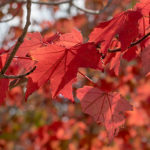Non-Fall Hazard shade trees

It’s almost that time of year for digging trees. There are some risks when it comes to fall digging season and you might be wondering what those risks are and what is safe to dig.
When handled correctly, many trees can be safely moved in the fall; however we have a list of trees that are considered poor candidates.
Christensen's Plant Center Fall Digging Hazard Trees
For instance, if a freshly-dug tree is slow at regenerating roots or lacks new established roots, that tree could be considered high risk. Thin-barked twiggy trees like birch and willow are also at high risk due to having trouble retaining moisture during the winter months. Fall planted trees of any species still require water going into the winter and many losses can be blamed on the tree drying out.
Even though Red maple is on the Fall Hazard list, the Freeman Maple hybrids (Acer x freemanii ) like Autumn Blaze® (‘Jeffersred’) are not considered a poor risk. Being a cross between silver and red maple, they are tough, fast growing, adaptable trees. They are drought tolerant when established and hardy to Zone 3, making them good candidates for fall digging. Norway (Acer platanoides) and Sugar (Acer saccharum) maple also tend to move well in the fall.
Some others to consider are Ginkgo and ‘Ivory Silk’ Tree Lilac (Syringa reticulata) - even though that last is not technically a shade tree we do see demand for them in landscapes where space is at a premium.
Any of our knowledgeable staff would be happy to help answer questions or give you the most suitable substitutions regarding fall hazard trees.
Visit these links for more information about Fall Hazard trees:
Fall Hazard tree lists explained (Sticks & Stones, Jeff Good)



